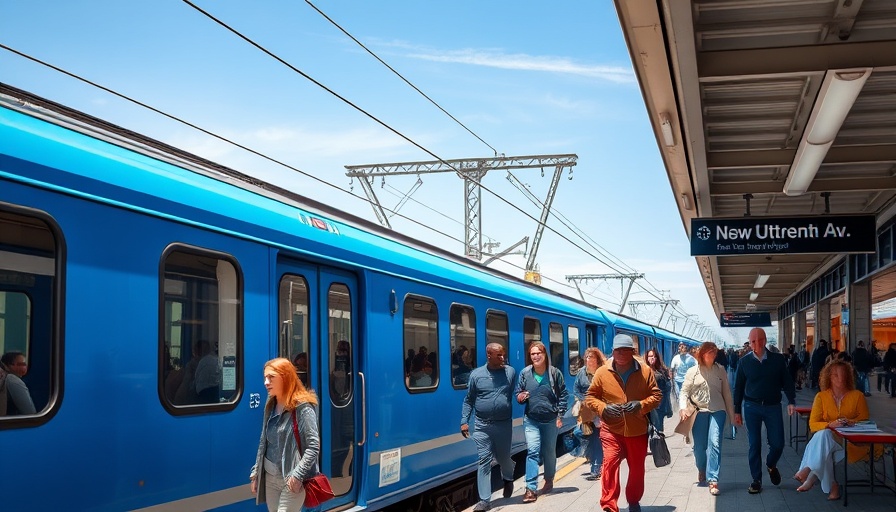
NYC’s Freight Line Transformation: An Overview
In an era increasingly focused on sustainability and efficient urban transit, the recent announcement that Jacobs and HDR have won a contract to convert a freight line into passenger service demonstrates a significant shift in New York City's approach to public transport. This $16 million design contract not only symbolizes infrastructural innovation but also paves the way for expanded transit options aimed at improving connectivity and reducing congestion.
The Benefits of Transforming Freight Lines
Historically, urban freight lines have been underutilized spaces in metropolitan environments. By repurposing these existing corridors for passenger use, cities can minimize costs related to land acquisition while revamping transit. The project promises to rehabilitate the 10.5-mile stretch of the rail line connecting the Bronx to Harlem, reflecting a sustainable approach to urban planning that aligns with government goals for improving public transportation networks.
Potential Impact on NYC Infrastructure
This transformation could significantly alter the mobility landscape in New York City. With increased efficiency in transporting passengers, there are implications for reduced traffic congestion and enhanced commuter experiences. Moreover, reintroducing a rail service could inspire similar projects in other cities, establishing a trend towards revitalizing older transport infrastructure to meet modern demand.
Economic Insights: Revitalization and Revenue
The Jacobs/HDR contract is more than just an engineering challenge; it’s a strategic financial move poised to generate economic activity. As passenger services expand, local businesses are likely to see increased foot traffic, contributing to neighborhood economic rejuvenation. Moreover, the project may qualify for federal or state grants aimed at improving infrastructure and supporting sustainable transit options.
Innovations in Construction Technology
With Jacobs being renowned for integrating cutting-edge technologies into their projects, this initiative embraces modern methodologies, including AI-driven design techniques and advanced materials for longevity and sustainability. By utilizing smart construction practices, Jacobs and HDR can enhance project management efficiency and outcome quality, ensuring that this ambitious project meets the evolving needs of urbanized America.
Anticipating Challenges Ahead
While the promise of improved passenger transportation is exciting, significant challenges must be navigated. Community engagement will be vital to address potential concerns from local residents regarding noise, air quality, and public safety. A successful transformation will require accurate assessments and transparent communication with stakeholders to foster trust and achieve community support.
This initiative in NYC underscores a pivotal shift towards smarter and more sustainable urban transit solutions. With the right strategies and a commitment to innovative construction practices, the Jacobs/HDR project has the potential not just to facilitate travel but to revitalize urban areas and set a benchmark for future infrastructure projects across the nation.
 Add Row
Add Row  Add
Add 




Write A Comment